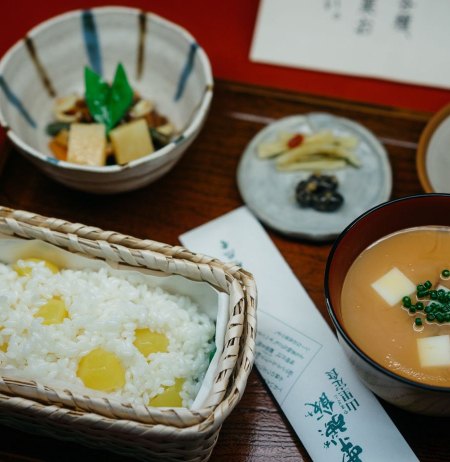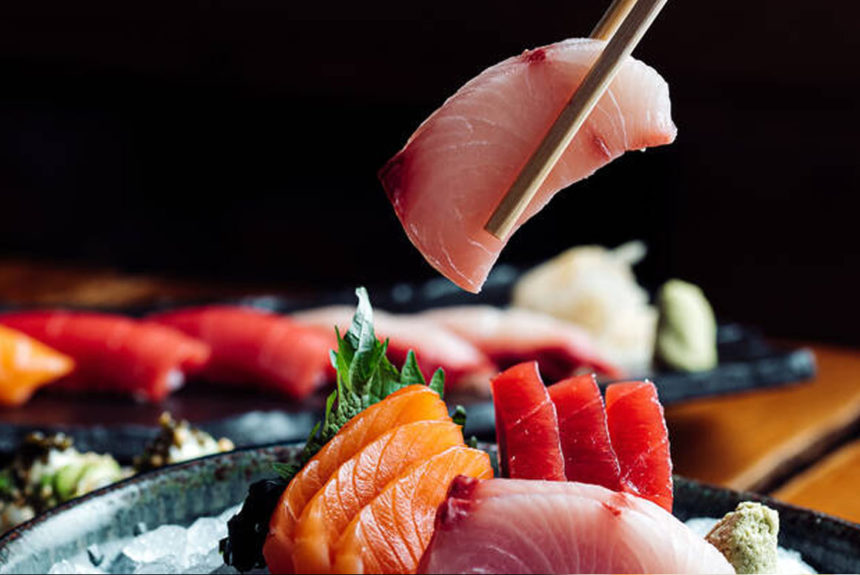What are some must-know Japanese food facts?
Well, there are plenty.
Japan is a top travel destination for many reasons… including the food. So, what’s so special about Japanese cuisine? In this guide, you’ll learn some Japanese food facts!
Let’s take a look.
1) Fish is used in most Japanese dishes
This may be one of the more obvious Japanese food facts here.

Japan is an island nation, so of course, fish would be common.
It’s difficult not to eat fish in most Japanese food, which can be particularly problematic for vegans and vegetarians. Even if the food doesn’t contain chunks of fish, the broth or base flavor of many dishes is made with fish broth. Fish is one of the main reasons Japanese cuisine has a distinct umami flavor.
2) Every region has a distinct food culture
Although Japan is just slightly larger than Germany in land area, every region has their own distinct food culture.
One of the most enjoyable aspects of traveling in Japan is that you can eat something special from every place you visit. If you visit Osaka, you’ll find all kinds of street unique Japanese foods like takoyaki and okonomiyaki. In Kobe, you’ll find delicious Kobe beef or Akashiyaki.
3) Focus on seasonality
Along with distinct regions, Japanese cuisine reflects the seasons.
Japanese people will eat more soups, hotpots, and warm dishes during the cold months, like “Oden.” In the Summer, dishes like cold somen noodles with ice are popular. During spring-time, you’ll see cherry-blossom related food and drinks. In the fall, you’ll see persimmons. Of course, that’s just scratching the surface – there’s lots more.
Even with fast food. For example, if you go to a McDonald’s in Japan, you’ll notice seasonal menu items that use seasonal ingredients.
4) Japanese food is not spicy
Traditional Japanese food is usually not spicy.
The flavors of Japanese food are mild and straightforward. Japanese cuisine values the taste of authentic ingredients instead of flavoring them with strong spices. This is why many people in Japan cannot handle very spicy food.
5) Soybeans are everywhere
Many Japanese dishes use soybeans as a base.
Soysauce, miso paste (fermented soybean paste), natto (fermented soybeans), and tofu are all made with soybeans. These condiments and ingredients are vegan-friendly and full of health benefits.
6) Sushi was initially meant to preserve fish

When sushi was first invented, it was a preservation method so that the fish and rice wouldn’t spoil.
The first sushi was a combination of fermented rice and fish. These days, people enjoy sushi as a fresh eating experience. However, you’ll still notice that the rice is always vinegared.
7) Japanese meals are well-balanced

Traditional Japanese cuisine focuses on being well-balanced.
You’ll find rice, pickles, soup, and several dishes in a typical meal. This eating style is well-balanced because you can eat many different types of ingredients in one meal. It’s also easier to be satisfied after eating because you feel like you’re eating a lot. Still, each part of the meal is relatively small.
8) The Japanese word for rice means food
Many Japanese people eat rice several times a day, and rice is a staple in their diet.
In Japanese, the word for food (gohan – ご飯) also means rice because it is such a central part of every meal. In most Japanese households, families will cook many side dishes with rice.
9) Ramen originally came from China

Ramen has become known worldwide as part of Japanese cuisine. But, it was brought to Japan by Chinese immigrants in the 1900s. As it spread in Japan, new takes on the Chinese dish developed, making it into what it is today. There are distinct Japanese flavors like tonkotsu ramen and miso ramen.
10) Most wasabi is not real wasabi
Most wasabi you’ll encounter is likely not real wasabi.
Real wasabi is hard to cultivate because it requires clean and pure water. Before chefs serve the wasabi, it needs to be freshly grated. Real wasabi is not as spicy and strong as the “fake” wasabi and allows the flavor of the fish to go through. “Fake” wasabi, on the other hand, is usually made with horseradish and mustard flour. This is what gives it a strong taste that can sometimes be overwhelming.
11) Plating and presentation are as important as the food

An essential part of Japanese cuisine is that care is placed into the plating and presentation of the food.
Each dish typically gets a special plate. It’s rare to eat a Japanese meal on one plate. Instead, there is a unique long plate for fish, separate bowls for rice and soup, and mini plates for pickles.


Leave a Reply